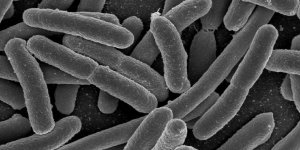| Health / Health News |
Baby teeth link autism and heavy metals
Baby teeth from children with autism contain more toxic lead and less of the essential nutrients zinc and manganese, compared to teeth from children without autism.

Cross-section of tooth showing laser removal of the dentine layer, in tan, for analysis of metal content. Image credit: Mount Sinai Health System/NIH
The findings suggest that differences in early-life exposure to metals, or more importantly how a child’s body processes them, may affect the risk of autism.
The differences in metal uptake between children with and without autism were especially notable during the months just before and after the children were born. The scientists determined this by using lasers to map the growth rings in baby teeth generated during different developmental periods.
The researchers observed higher levels of lead in children with autism throughout development, with the greatest disparity observed during the period following birth. They also observed lower uptake of manganese in children with autism, both before and after birth.
The pattern was more complex for zinc. Children with autism had lower zinc levels earlier in the womb, but these levels then increased after birth, compared to children without autism.
Patterns of metal uptake were compared using teeth from 32 pairs of twins and 12 individual twins. The researchers compared patterns in twins where only one had autism, as well as in twins where both or neither had autism. Smaller differences in the patterns of metal uptake occurred when both twins had autism. Larger differences occurred in twins where only one sibling had autism.
The findings build on prior research showing that exposure to toxic metals, such as lead, and deficiencies of essential nutrients, like manganese, may harm brain development while in the womb or during early childhood. Although manganese is an essential nutrient, it can also be toxic at high doses. Exposure to both lead and high levels of manganese has been associated with autism traits and severity.
The study was led by Manish Arora, Ph.D., an environmental scientist and dentist at the Icahn School of Medicine at Mount Sinai in New York with support from National Institute of Environmental Health Sciences. (NIH)
YOU MAY ALSO LIKE





